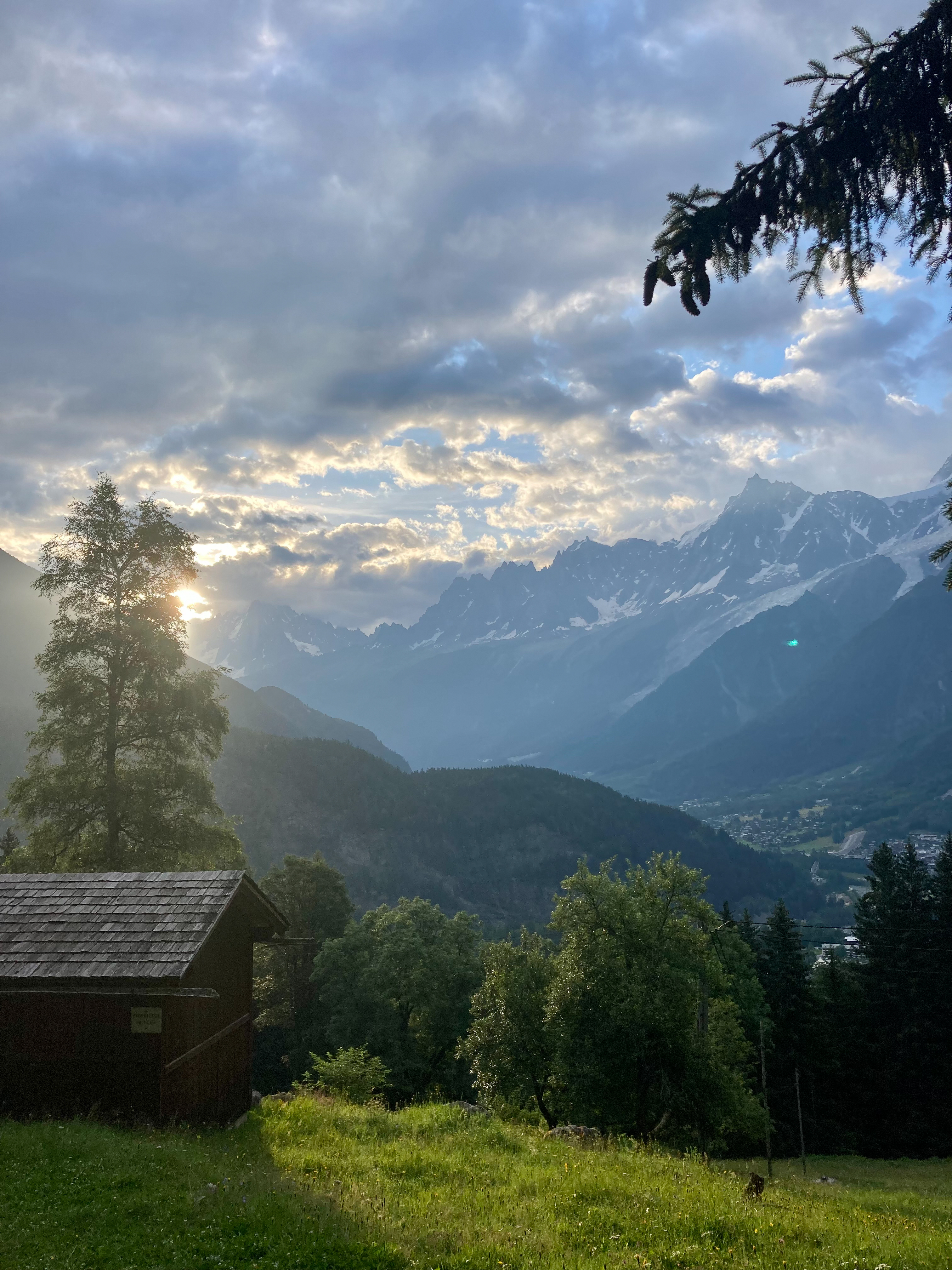Postcard From a Graduate Student: Summer School in France

The view from one of my morning runs. I was inspired by Professor Josh Ruderman, who’s record time getting to the top of the mountain was 52 minutes. I tried to keep up with him one morning, and let’s just say that did not go well for me. Kudos, Josh.
Nestled on the side of a mountain in the Auvergne-Rhône-Alpes region of France, L’École de Physique des Houches is a haven of learning and innovation. The school’s over 70 years old, and it’s a combination of a beautifully renovated school building, communal dining room and a handful of chalets all tucked into a mountain that blew my mind with its vastness each time I looked out a window. Every year a handful of lucky particle physics graduate students get to spend a month here learning from top researchers and academics in the field. This year, I was one of them.
There was rigorous hiking, brainstorming with new friends over a glass of local Terret Noir wine and learning more about particle physics and cosmology than I knew there was to learn. By the end of each day, I practically fell into bed, exhausted by the intensity of it all. Our classes centered around the fascinating subject of dark matter — a type of invisible matter that makes up about 27% of the content of the universe. The nature of dark matter — what it is and how it interacts with other particles — is one of the biggest open-ended mysteries in physics today.
One topic in particular came up often in our classes: thermal freeze out. At the current average temperature of the universe, forces at work between dark matter and “normal” matter particles like protons and electrons are extremely weak. However, particle physicists propose that at very high temperatures dark matter could feel a force coming from everyday matter.
We call the force felt between particles — like how the force of gravity keeps the planets in orbit around the sun — an interaction. In some ways, this is similar to the transition from water to ice. When pouring water onto a sponge at room temperature, the sponge will pull in the water molecules. This indicates an interaction between the water and the sponge. On the other hand, when you place an ice cube on a sponge in a freezing room, the ice will sit on top of the sponge. In this case, no absorption takes place, indicating that there is no interaction between the water and the sponge. In this analogy we would say that the interaction between the water and the sponge is “frozen out.”
Theoretical physicists hypothesize that at the time of the Big Bang, the universe was extremely hot and dense, and dark matter was able to interact with normal matter due to the increased temperatures. Then, as the universe cooled and expanded, dark matter stopped interacting with normal matter, kind of like the ice cube sitting on the sponge. Because dark matter no longer interacts with normal matter at today’s temperatures, we cannot see it. This is thermal freeze out, and we use it often in modern theoretical particle physics to explain the nature of dark matter.
Thermal freeze out often arose in our lectures. It’s a theoretical framework for the way in which dark matter interacts with normal matter at different temperatures, and it’s relevant to almost every area of dark matter research because it tells us about the types of conditions under which we might detect it.
After returning to Southern California after my month in France, I felt motivated and inspired to work on dark matter research. I credit this renewed motivation to the many wonderful people I met, and I’m so grateful to have had the opportunity to make a significant stride towards becoming an expert in this subfield. Now, back in my windowless office at UCI, I often daydream of the Alps — but who knows, maybe I’ll be back to Les Houches one day as a lecturer myself.
Anne-Katherine Burns (annekatb@uci.edu) is a particle physicist and Science Communication Fellow in the UCI Department of Physics & Astronomy who, when she's not telling stories about the cosmos, is probably surfing somewhere off the Orange County coast.
